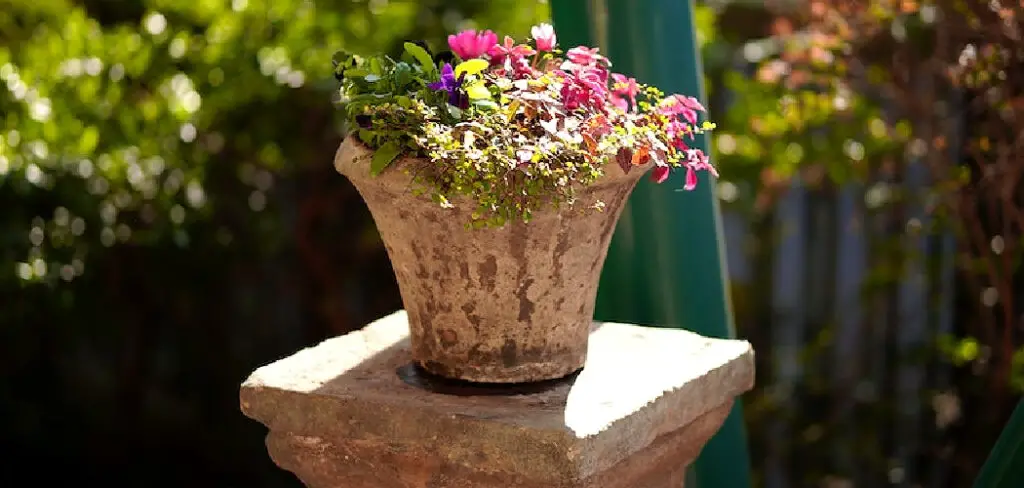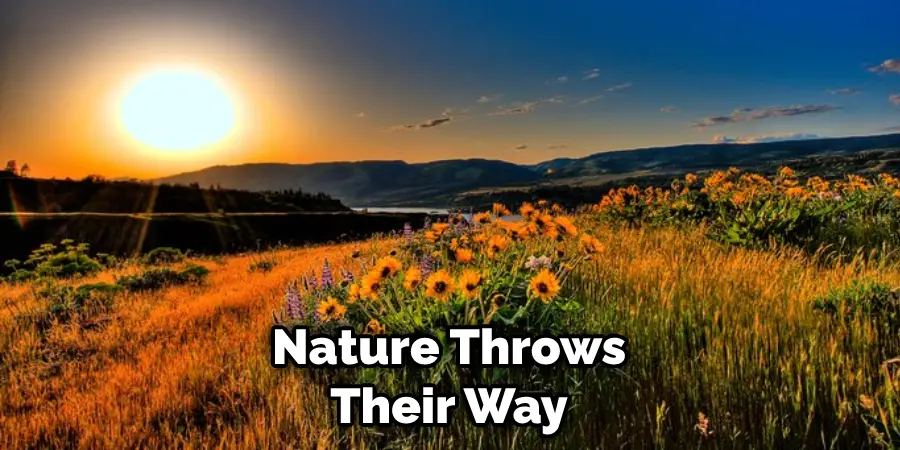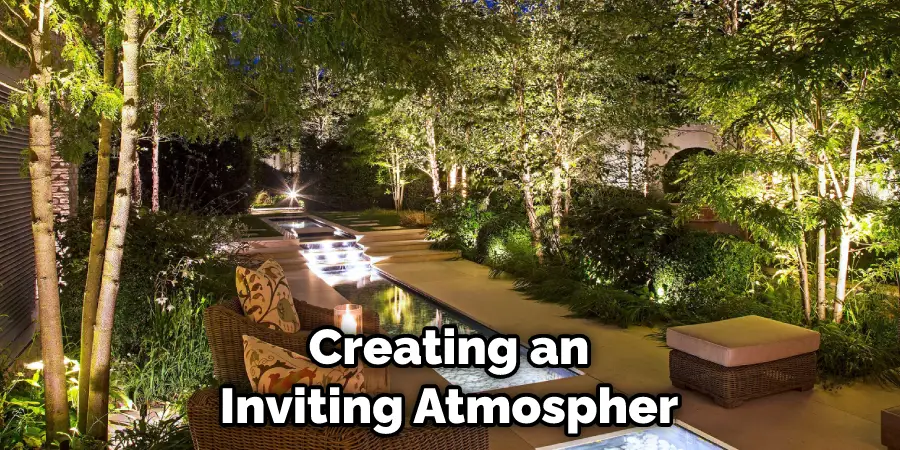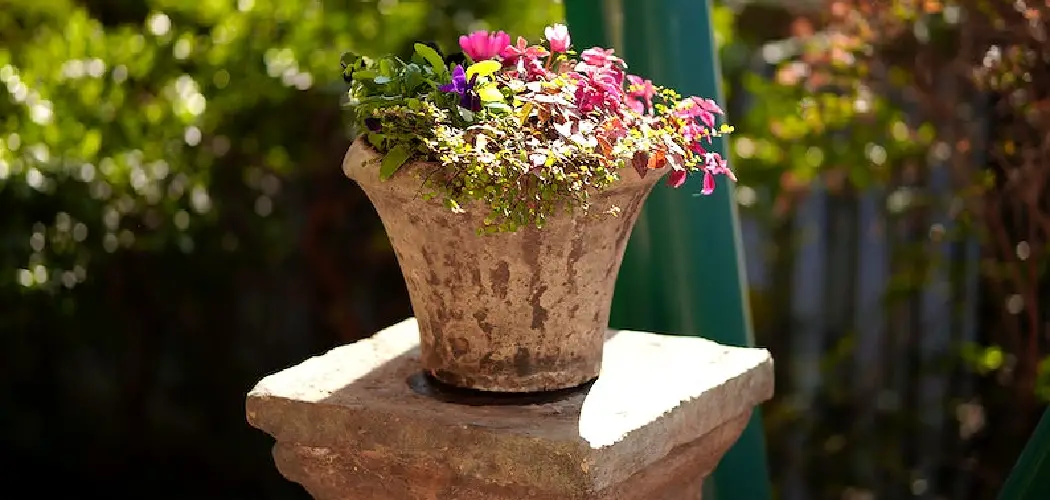If you have a small patio or balcony, you may think it’s impossible to create an inviting outdoor space filled with plants. But the truth is that no matter how much square footage you have, there are plenty of creative arrangements for potted plants that will transform even the tiniest spaces into cozy oases!

In this blog post, we’ll explore what makes a great patio design and provide tips on how to arrange potted plants on a small patio in a way that maximizes both style and function. Read on if you’re looking for ideas on how to turn your tiny patch of paradise into something truly special!
What Do You Put under Pots on a Patio?
When it comes to creating a beautiful and functional patio design, the choice of what to put under the pots is an important decision. Depending on the size, shape, and placement of your potted plants, you may want to consider various options for creating a supportive base.
One popular option is to use pot feet or saucers underneath your potted plants. Pot feet are small stands that can be placed under each pot to help raise them off the ground and promote good drainage. Saucers, on the other hand, provide a flat surface for your pots to sit on and collect excess water from outdoor watering applications.
Another useful option is to use rubber plant mats or garden pads beneath your potted plants. Not only can these mats help protect a patio surface from moisture and staining, but they also serve to cushion pots from damage should they be accidentally knocked over. On top of that, garden pads come in all kinds of sizes and colors to complement any design aesthetic.
Finally, for those who want to dress up the area around their potted plants, decorative stones are an attractive alternative to the other options. Whether you choose small pebbles or large stones, these materials can create a clean and sophisticated look for your patio. Decorative stones also provide additional drainage when used in conjunction with pot feet or saucers.
No matter which option you choose, it’s important to make sure the base you put underneath your potted plants is safe and secure. By taking the time to select a supportive base for your plants, you can rest assured, knowing they will stay put no matter what nature throws their way.

10 Methods How to Arrange Potted Plants on a Small Patio
1. Place Taller Plants in the Center.
If you have taller plants, place them in the center of your patio. This will create a focal point and make your patio appear more balanced. You can then surround the taller plants with shorter ones. If you don’t have any taller plants, use planters of different sizes to create a similar effect. If you do not have any tall plants or planters, use furniture to create height and interest.
2. Use a Variety of Plant Sizes.
Don’t just use one size of the plant. Instead, use a variety of sizes to create interest and visual appeal. Larger plants can go in the back, and smaller ones in front. This will give your patio a layered look and make it more interesting. Also, mix up the shapes of your plants.
Tall, spiky plants can go in the back to add height, while lower-growing, bushier plants can make a nice foreground. By mixing up the sizes and shapes of your plants, you can create a garden that looks like it was professionally designed!
3. Create Symmetry.
Arrange your plants so that they are symmetrical. This will give your patio a more polished look. Place two plants on either side of the patio or in straight lines along the edge of the space. If you want to add more texture, try grouping plants of the same type in symmetrical patterns. This will create a more aesthetically pleasing display that is easy to maintain.
To further enhance the look, add a few small accents, such as lanterns or wind chimes. This will give the plants more depth and interest, creating an inviting atmosphere for you and your guests.

4. Use Odd Numbers.
When arranging your plants, use odd numbers rather than even numbers. This will create more visual interest. Grouping plants in odd numbers helps to provide a more natural and pleasing look, which is very important for small patios.
Group them in threes, fives, and sevens for the best effect. If you’re using a variety of different plants, try to group them in odd-numbered combinations that have one dominant plant as the focal point.
5. Group Plants Together.
Instead of placing your plants randomly around the patio, group them together in clusters. This will create a more cohesive look. You can also mix and match different textures, colors, and sizes for a more dynamic arrangement. Make sure to leave enough space in between the clusters so that the individual plants have enough room to breathe.
If you’re feeling adventurous, you can even combine potted plants with hanging baskets and window boxes for a more dramatic effect. Try to create a sense of balance by alternating tall, medium, and low-growing plants around the patio. This will help to create an interesting, layered look and add more visual interest to your space.
6. Consider Color when Grouping Plants Together.
When grouping plants together, consider using plants with similar colors. This will create a more unified look. Using plants with complementary colors can also be an effective way to add visual interest and contrast. For example, combining a bright pink flowering plant with a deep green foliage plant can make for an eye-catching combination.
Consider how the colors of your plants will look in relation to one another and create groupings that are aesthetically pleasing.
7. Use Containers of Different Heights.
To add visual interest, use containers of different heights when arranging your plants. This will give your patio more dimensionality. Try to use planters of different shapes and sizes, too, as this can help create a more beautiful layout. Also, it’s important to remember that taller plants should be placed at the back of the patio to provide depth and texture.

Don’t forget about accessories such as water fountains or birdbaths to add extra charm and personality to your arrangement. Finally, make sure that the containers are securely placed on the patio and won’t tip over in windy weather.
8. Layer Your Pots.
Instead of just placing your plants on the ground, layer them in different levels for added depth and visual appeal. Place larger, heavier pots on the bottom layer and fill them with plants, then place smaller pots filled with different plants on top for a unique look.
You can also build multi-level planter stands to add different heights of greenery along your patio perimeter.
However, you should make sure to check the weight limits of your patio decking or floor before stacking too many pots. Additionally, be mindful of the amount of sun each pot receives and select plants that prefer similar amounts of light. By layering different sizes and styles of pots together in distinct layers, you’ll create an eye-catching display while utilizing your limited space.
9. Create Pathways Between Pots.
Create pathways between your pots to make it easier to navigate around your patio and also give it more character. You can use various materials to make a pathway, such as gravel, sand, bricks, or flagstones. The size of the path depends on the size of your patio since a smaller space may not have enough room for large pathways. Experiment with different materials and shapes to find what works best for you.
10. Accessorize with Furniture and Accessories.
Add furniture, lights, or other decorative accessories to give your patio a unique look and add even more style! Additionally, outdoor furniture can provide additional seating and act as an area to relax and enjoy the plants. When adding furniture, it is important to make sure that pieces are properly spaced out to accommodate the plants and avoid overcrowding.
If you want to add lighting, there are many options available such as string lights or lanterns that can be set up around the patio to further enhance the area. With some imagination, you can easily create a space that is both inviting and beautiful!
By following these tips for how to arrange potted plants on a small patio, you can transform even the tiniest spaces into cozy oases that reflect your personal taste! With a careful selection of materials and design elements, you can create an outdoor living space that is both functional and aesthetically pleasing.

Conclusion
Use your plants to create a focal point. Groups of three plants or even one large plant in a single pot can make a dramatic statement. Container gardens are also a great way to add privacy to your small patio space.
Place tall pots filled with climbing vines near the edge of your patio for added seclusion from nosy neighbors or passersby.
Thanks for reading our blog post on how to arrange potted plants on a small patio! We hope you found it helpful and informative.
You Can Check It Out to Fix Rusted Patio Chair Legs
About
Outdoor Fixes is a distinguished figure in the world of Diy design, with a decade of expertise creating innovative and sustainable Diy solutions.
His professional focus lies in merging traditional craftsmanship with modern manufacturing techniques,
fostering designs that are both practical and environmentally conscious. As the author of diy,
outdoorfixes delves into the art and science of outdoorfixes-making, inspiring artisans and industry professionals alike.
Education RMIT University
(Melbourne, Australia) Associate Degree in Design (Outdoor Fixes) Focus on sustainable design, industry-driven projects,
and practical craftsmanship. Gained hands-on experience with traditional and digital manufacturing tools, such as CAD and CNC software.
Nottingham Trent University
(United Kingdom) Bachelor’s in outdoorfixes.com and Product Design (Honors) Specialized in product design with a focus on blending creativity with production
techniques. Participated in industry projects, working with companies like John Lewis and Vitsoe to gain real-world insights.
Publications and Impact
In diy, Outdoor Fixes his insights on indoor design processes, materials, and strategies for efficient production.
His writing bridges the gap between artisan knowledge and modern industry needs, making it a must-read for both budding designers and seasoned professionals.

